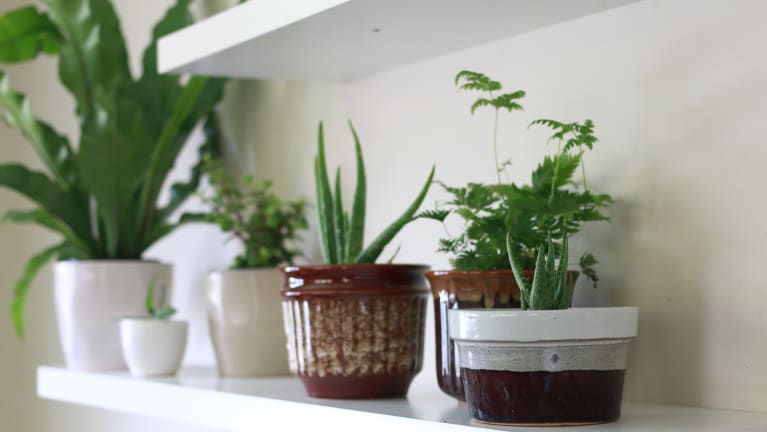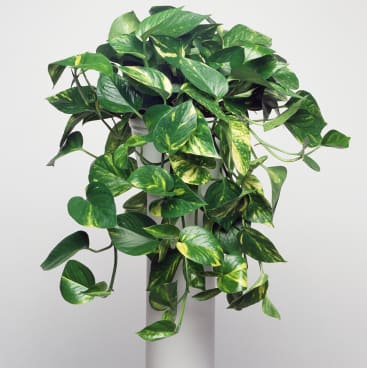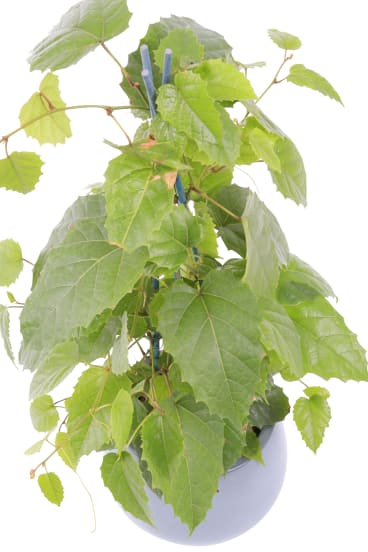Indoor plants have been experiencing a revival – thanks in part to Millennials and their love of fiddle leaf figs, but more generally because they simply look nice.
But there's another benefit that researchers and gardeners say is underappreciated.
Indoor plants are pretty, but they can also improve air quality.
"The beauty of indoor plants is that they turn carbon dioxide into oxygen and in so doing this helps to improve air quality," Gardening Australia host Costa Georgiadis said.
And in a report published on Friday, a group of Italian researchers say more work needs to be done to find out how plants purify air so people can pick the best plants for the job.
"Although it has been demonstrated that plants can improve indoor air quality by the pioneering work made at NASA during the '80s, there is still a limited understanding and scant knowledge of the plant metabolic processes able to remove indoor air pollutants," said Federico Brilli, a plant physiologist at the National Research Council of Italy.
"Research should provide new insights into the physiological functions, genes and enzymes characterising the plant's capacity to purify air."
In the report published in Trends in Plant Science, Mr Brilli and his colleagues at the Institute for Sustainable Plant Protection said indoor plants needed to be tested in different settings.
Mr Brilli said the effect of micro-organisms, like bacteria and fungi found on the plants or in their soil, also needed more research.
"This micro-biome can contribute to the removal of airborne pollutants, but could also have some negative effects on human health," Mr Brilli said.
Gardening Australia’s Costa Georgiadis says there are plenty of plants perfect for growing indoors.
He said scientists should look at the different aspects of a plant's makeup – including leaf shape and size, physiology and anatomy – to work out which plants were best for the job of improving air quality.
"More research is urgently needed to identify the characteristics of the best-performing plant species in indoor environments," he said.
Georgiadis said there were plenty of plants widely understood to improve air quality indoors.
"The Madonna lily, or Spathiphyllum, may help to reduce toxins," he said.
"Mother-in-law's tongue, or Sansevieria, is a very well used and successful indoor plant ideal for the bedroom or living room."
Devil’s ivy grows well in low light and low temperatures, Georgiadis says.
The gardening guru said devil's ivy – or Epipremum aureum – is also a good indoor plant, tolerant of low light and low temperatures.
"Other plants to have a go at indoors include Aspidistra or cast-iron plant; Diffenbachia or philodendron with their large leaves; figs, such as Ficus Benjamina; and begonias are a very hardy indoor plant that come in many shapes and sizes," he said.
"And did I mention succulents?"
Georgiadis said umbrella trees and Dracaena plants, including the dragon tree and the happy plant, were also great indoors, as is the Australian native kangaroo vine.
Mr Brilli said people should think about their indoor garden as a whole, rather than a collection of individual plants.
Georgiadis says the Australian native kangaroo vine makes a good indoor plant.
"We should also optimise the performance of plants indoors by establishing the optimal number, disposition and the environmental requirements that maximise their ability to purify the air accordingly to pollutant levels and the characteristics of the different interior spaces," he said.
"This will make plants not only a decorative tool, but a functional element of design."
For people nervous about killing their indoor plants, Georgiadis said it was best to just jump in.
"Like anything, if you don't start, you will never know," he said.
"The benefits are beyond your ability to have new living and breathing family members to enjoy keeping alive and happy, but the joy of their presence is a therapeutic element of horticulture that more and more people need in their apartments and homes because they no longer have the privilege of a garden."
Georgiadis said if you were still unsure about starting your own indoor garden, doing a little research like following Instagram accounts and talking to the people at your local nursery, could be a big help.
"Look at other people's successes with indoor plants and take a few mental and written notes about the plants' location and conditions," he said.
"And remember that mistakes are the regular exercise of gardeners who are growing and learning with their plants."
Source: Read Full Article









